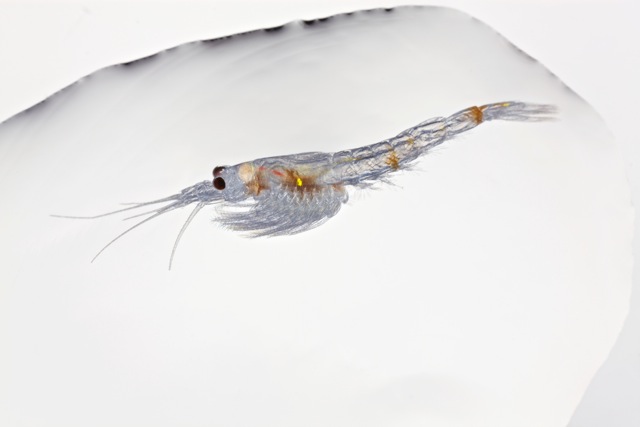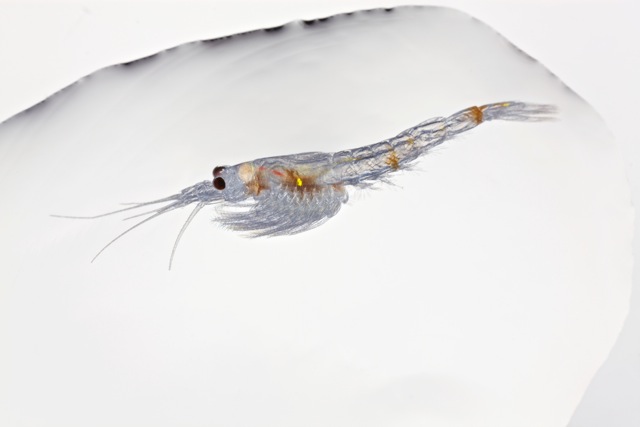 “mysid shrimp” 10.7mm from tip of antennae to tailPhoto: David Liittschwager
“mysid shrimp” 10.7mm from tip of antennae to tailPhoto: David Liittschwager
Naturalist E.O. Wilson once wrote that “a lifetime can be spent in a Magellanic voyage around the trunk of a single tree.” Easy for him to say: He’s made a distinguished career out of studying ants and a lot of other little wriggly things that most of us dread finding in the shower in the morning.
But Wilson found a kindred spirit in photographer David Liittschwager. Liittschwager has spent years photographing animals, from squirrels to beetles, in a Darwinian effort to wrap his mind around the sheer variety of life on the planet.
“hydrozoan jellyfish” 3.2mm widePhoto: David Liittschwager“The idea of biodiversity is a little abstract when you start talking about these huge numbers of creatures. There may be as many as 40 million species we don’t even know about — and that doesn’t even take into account the really little things,” Liittschwager says. “How do we get our heads around that? We need a manageable sample size.”
So Liittschwager created the One Cubic Foot project, which involves dragging a small, green, open-sided box around the globe and setting it up in different places to see what wanders, slithers, swims, or flutters through. A batch of the resulting photographs was published in National Geographic last year, along with an essay by E.O. Wilson.
Now Liittschwager has gone big with this small idea, producing a series of supersized photos of creatures he snagged in a 12-by-12-inch net dipped into the water under the Golden Gate Bridge. The images went on display this week at the David Brower Center, a hub for eco-minded nonprofits in Berkeley.
“fish larva” 6.5mm in lengthPhoto: David LiittschwagerLiittschwager calls the San Francisco Bay “one of the most radically altered habitats in the world,” so even he was blown away by the number of larval fish, diatoms, jellyfish, and other life he raked in. His catch varied widely with the tides and the time of day, he says. “It’s a whole different group of creatures at night.” Based on the number of creatures he netted, he estimates that up to 2.6 billion creatures might move through a single cubic foot of bay water in a single 24-hour period.
For this project, Liittschwager stuck to creatures visible to the naked eye, but says his next mission may be to look at the “really little things” — requiring a microscope. For that, a cubic foot will be too big a sample size; a cubic inch might be more like it. Or maybe he’ll be a little less scientific this time around: “The handful of soil is sort of famous for being the Holy Grail for biodiversity.”
When he’s done, you’ll never look at your garden the same again.
One Cubic Foot: Miniature Surveys in Biodiversity is on display now through the end of January. Find more information here.


